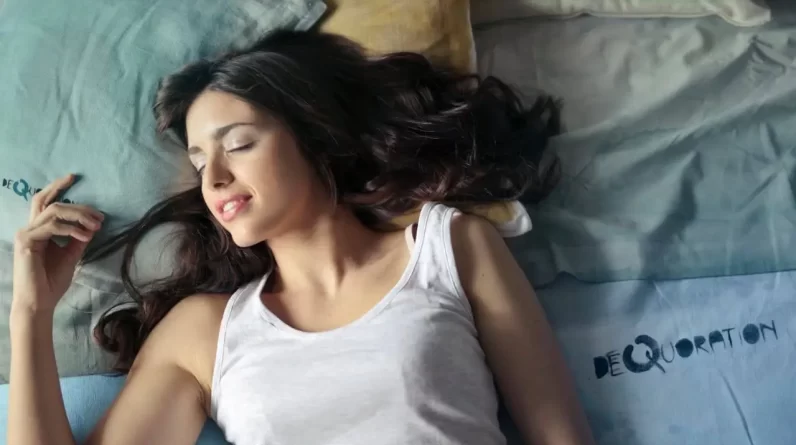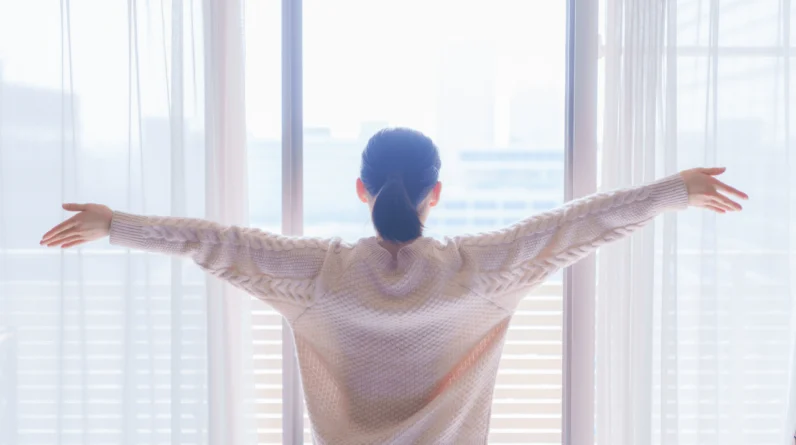
Feeling tense or overwhelmed?
If you’ve never heard of progressive muscle relaxation before, it might be something you want to try!
Progressive muscle relaxation (PMR) works to relax the body, one area at a time.
This can help activate your parasympathetic nervous system (the rest-and-digest state), helping both your body and mind decompress and relax.
And you can really do it almost anywhere and anytime. Below, we take a closer look at PMR, its benefits, and how you can add it to your rolodex of relaxation techniques.
For those experiencing chronic pain, such as tension headaches, migraines, arthritis, or back pain, PMR can be an effective non-pharmacological method to manage and reduce discomfort.
What is Progressive Muscle Relaxation (PMR)?
Progressive Muscle Relaxation (PMR) is a relaxation technique that involves systematically tensing and then relaxing different muscle groups in the body.
This method helps identify and release physical tension, which can often lead to mental relaxation as well.
Essentially, the PMR process involves focusing on one muscle group at a time, tensing the muscles deliberately for a few moments, and then letting go of the tension, allowing the muscles to completely relax.
The technique was first developed by Dr. Edmund Jacobson in the early 1900s.
Jacobson, a physician and physiologist, observed that physical tension often went hand-in-hand with emotional and mental stress. He theorized that by reducing the physical symptoms of stress, one could reduce overall anxiety and stress levels.
Since then, his method has been refined and incorporated into various stress reduction and therapy programs, gaining popularity as an accessible and effective relaxation aid.
So, how does it work?
PMR works by creating a heightened awareness of physical sensations associated with tension and relaxation. As you progress through tensing and relaxing different muscle groups, the contrast between tension and relaxation becomes more pronounced.
This not only helps in reducing the immediate physical symptoms of stress but also trains the body and mind to recognize and manage tension more effectively. So, with that in mind, let’s take a closer look at the benefits of PMR. Should you use it?
6 Benefits of Progressive Muscle Relaxation (PMR)
PMR has loads of benefits, including:
1. Reduces Stress
Regular practice of PMR can significantly decrease the levels of cortisol, the body’s stress hormone. In turn, this can help alleviate feelings of anxiety and stress. And yes, research shows this to be the case, too!
One study showed that PMR induced similar relaxation when compared to deep breathing and imagery techniques.
10 Tranquil Tips to Help You Wind Down at Night→
2. Improves Sleep
By easing muscle tension and promoting a state of relaxation, PMR can improve the quality of sleep.
It is particularly beneficial for those who suffer from insomnia or disrupted sleep patterns. In fact, research suggests that it can improve both sleep quality and fatigue, specifically in those with arthritis.
3. Decreases Pain
For those experiencing chronic pain, such as tension headaches, migraines, arthritis, or back pain, PMR can be an effective non-pharmacological method to manage and reduce discomfort. In many pain cases, stress can be a huge contributing factor, leading to a viscous cycle. However, PMR can help manage stress and, thus, decrease overall pain.
4. Enhances Concentration and Mood
Reducing physical tension and stress also clears the mind, allowing for improved concentration and productivity. Additionally, the relaxation achieved through PMR can contribute to enhanced mood and well-being.
5. Lowers Blood Pressure
By promoting relaxation and reducing stress, PMR can also help lower blood pressure, which is beneficial for heart health. Research, again, proves this to be the case with one older study demonstrating how PMR effectively reduced blood pressure and heart rate.
6. Improves Digestion
While this might sound like a stretch, PMR can improve digestive function.
Stress can negatively affect the digestive system. Thus, by managing stress and relaxing the body, we can potentially manage digestive symptoms by lowering stress levels.
How Do I Practice Progressive Muscle Relaxation?
So, without further delay, here’s a step-by-step guide on how to practice PMR.
Step 1: Find a comfortable space.
Choose a quiet, comfortable place where you won’t be disturbed. This could be in your bedroom, a cozy corner of your living room, or any place where you can lie down or sit comfortably.
Lie down or sit in a comfortable chair. Make sure your body is supported so that you can relax fully. Use cushions or blankets if necessary.
Step 2: Focus on your breath.
Begin by taking a few deep breaths. Inhale slowly through your nose, allowing your stomach to expand fully. Hold your breath for a few seconds, then exhale slowly through your mouth. Repeat this a few times to start the relaxation process.
Step 3: Clench and release.
Start with your feet and work your way up to your face. Clench each muscle group hard (but not to the point of strain) for about five seconds and then relax it for 30 seconds. Notice the sensation of release as you relax the muscle group.
Work through each group in the following order:
- Feet (toes, foot arches, heels)
- Lower legs (calves)
- Thighs and hips
- Abdomen and lower back
- Chest and shoulders
- Arms and hands (make fists, then release)
- Neck and face (tense facial muscles, then relax)
After tensing and relaxing each muscle group, pause to breathe deeply and feel the relaxation deepen in your body.
Take your time moving from one group to the next, maintaining a focus on the contrast between tension and relaxation.
Step 4: Take your time ending your session.
Once you have worked through all the muscle groups, spend a few minutes lying still.
Enjoy the feeling of calmness and relaxation throughout your body.
Then, gently wiggle your fingers and toes to bring movement back to your body. Stretch if you feel the need. Slowly sit up (if you were lying down) and take a moment before standing up.
Consider how your body feels now compared to before you started. This reflection can deepen your practice and make you more aware of the benefits of relaxation.
Related Article: 5 Benefits of Red Light Therapy: Should You Add it to Your Self-Care Routine?
When Should You Try It?
The truth is you can try this anywhere and anytime. However, you should ensure you have about 15-30 minutes of quiet time to complete this entire body scan.
And if you’d rather not do this alone, there are also plenty of guided versions of PMR out there. For instance, the Insight Timer app and YouTube have plenty of tracks.
Lastly, if you’re unsure if this will work for you, the best thing you can do is try it out and see how you feel before and after. This could very well be the exact tool missing from your mental wellness toolkit!
Read Next: These 11 Relaxing Activities Will Refresh & Recharge Your Mind, Body and Spirit
Photo by Andrea Piacquadio







